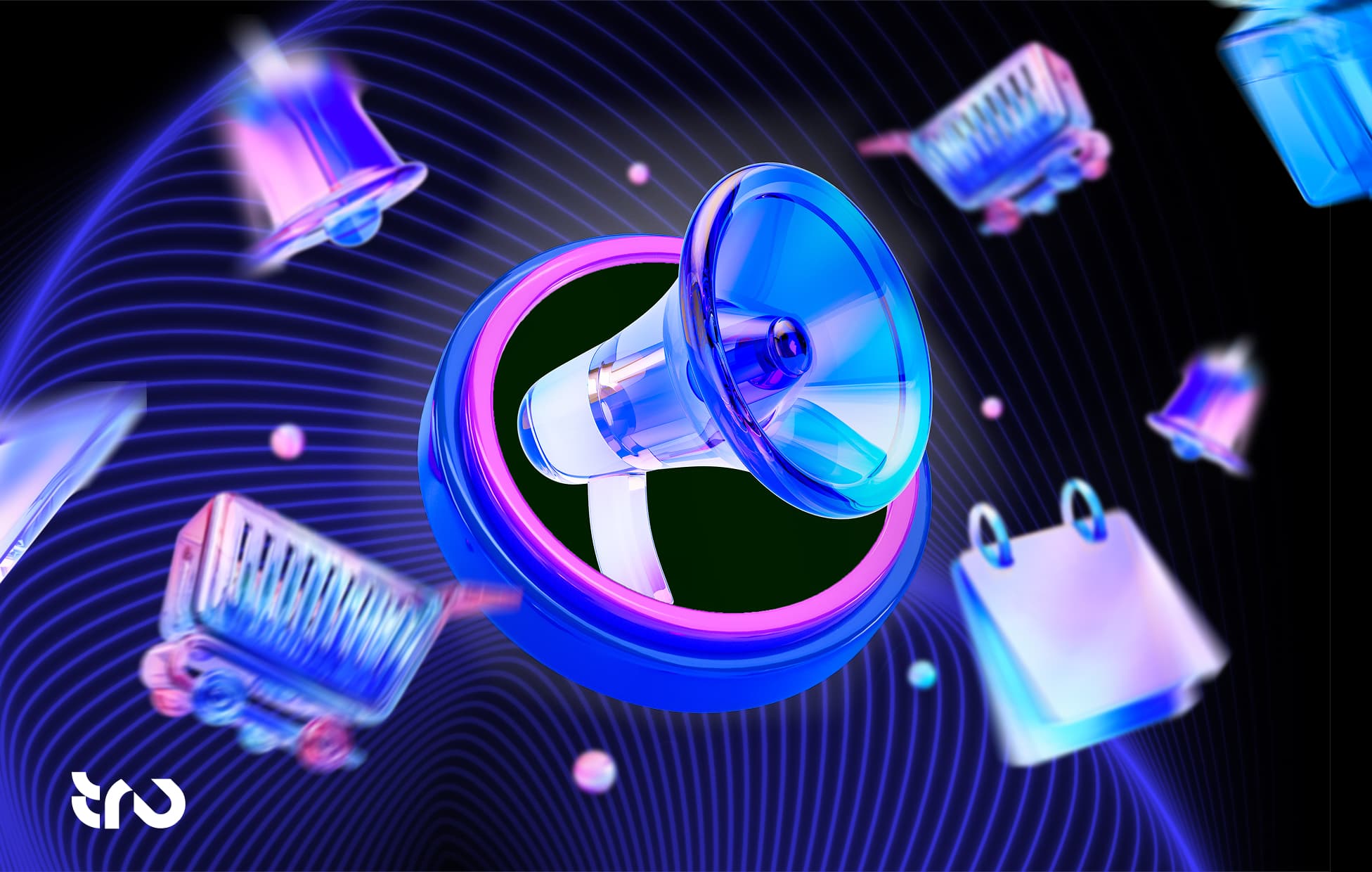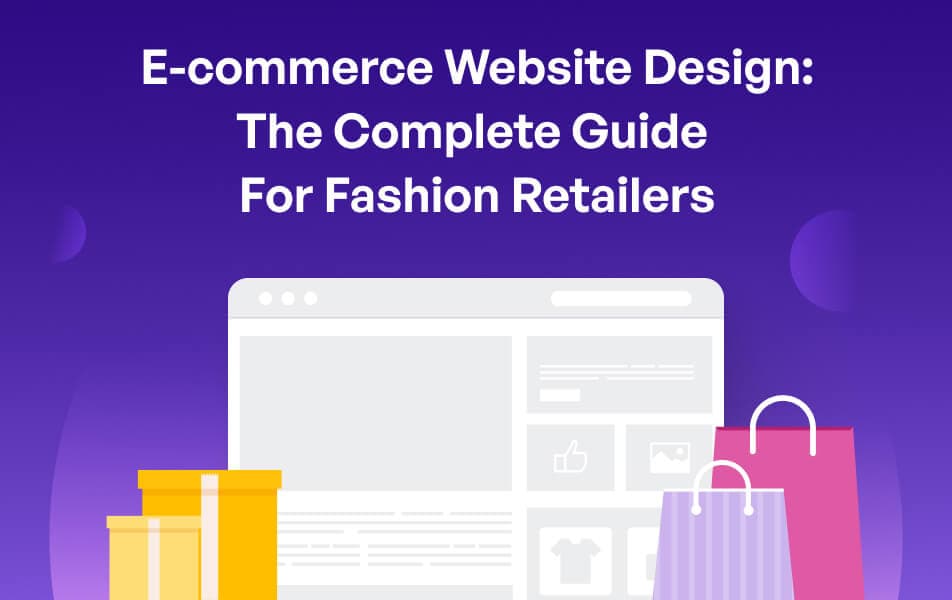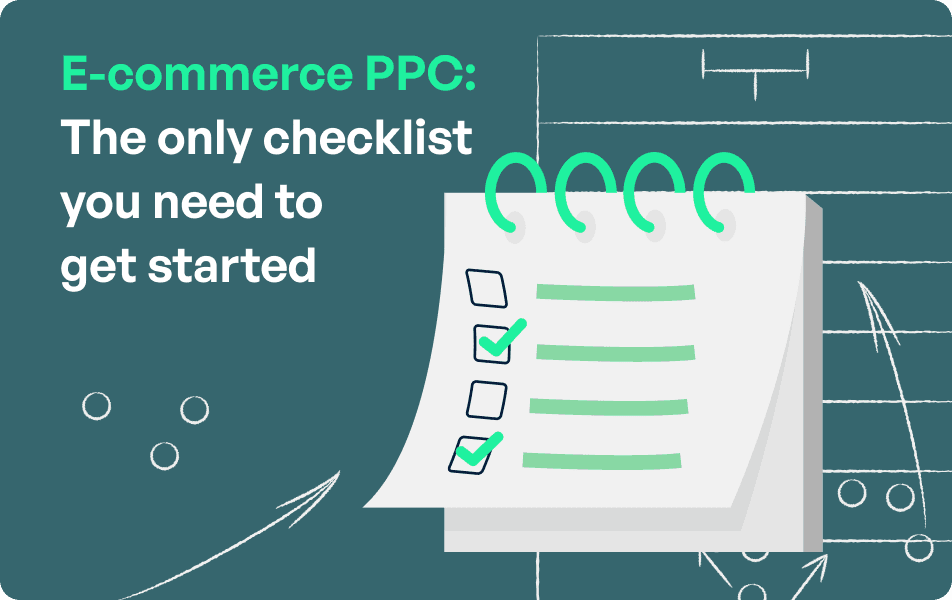In e-commerce, attention is everything. Clicks, carts, and conversations all begin with a single moment. When it comes to turning that attention into sales, e-commerce email marketing remains one of the most reliable options. This approach enables brands to connect on a personal level, build trust, drive sales, and increase repeat purchases.
According to Statista, there were 4.48 billion email users in 2024, with projections reaching 4.89 billion by 2027. This indicated how email continues to serve as a powerful channel for e-commerce businesses to engage customers at scale.
In this guide, we will walk through 7 proven email campaigns that help online stores boost engagement, recover lost sales, and drive steady and confident growth.
Why Does Your E-commerce Business Need Email Marketing?
In a crowded e-commerce space, attracting customers is only the beginning. The real challenge lies in retaining them. This is where email marketing for e-commerce stands out. It provides a direct, cost-effective channel for maintaining customer relationships and converting casual visitors into loyal buyers.
Email marketing consistently delivers one of the highest returns in digital marketing. For every $1 spent, businesses can earn up to $36. Ownership of an email list also eliminates dependence on third-party algorithms or paid media to maintain communication.
Additionally, email enables highly targeted outreach. Campaigns can be personalized based on purchase history, browsing behaviour, or customer preferences. It enhances engagement and guides individuals along the path from first-time interaction to repeat purchase.
7 Proven E-commerce Email Marketing Campaign Ideas
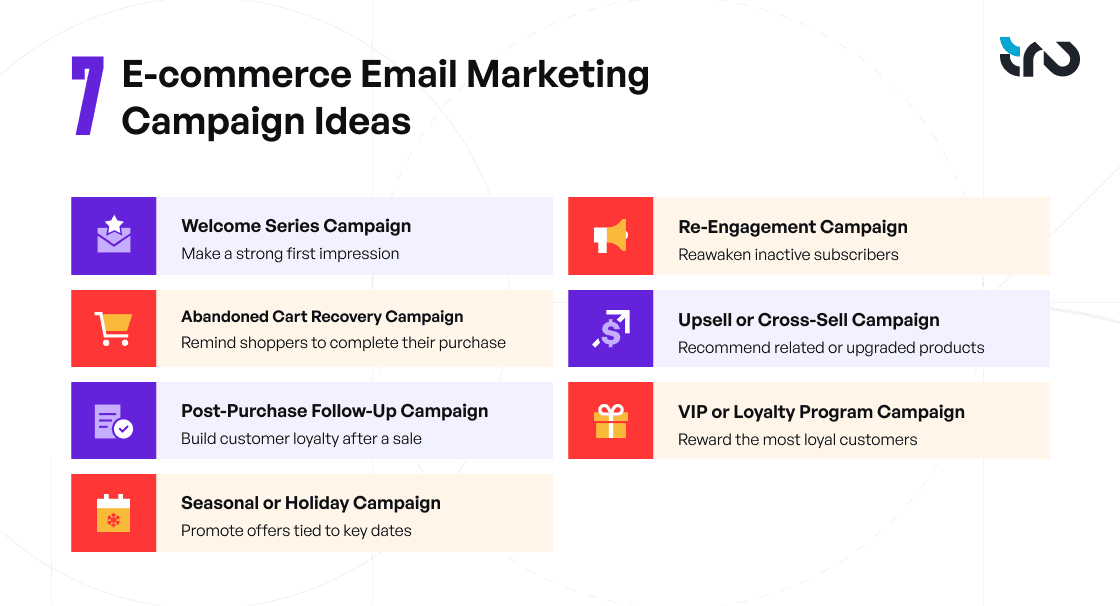
Not all emails are created equal. To deliver meaningful results, campaigns must have clear objectives, strategic timing, and content that resonates with the target audience. The following proven approaches have helped e-commerce brands boost revenue, re-engage lapsed customers, and strengthen long-term loyalty.
The first is one of the most essential email automation campaigns in e-commerce marketing.
1. Welcome Series Campaign
Objective: Establish a strong first impression and encourage new subscribers to complete their initial purchase.
Why It Works: A sign-up indicates intent and interest. A welcome email serves as an opportunity to introduce the brand, define expectations, and provide a compelling next step.
Steps to Try:
Send a personalized welcome email within 24 hours of subscription.
Include an incentive such as a discount or free shipping to increase conversion likelihood.
Follow up with 1–2 emails featuring best-selling products or highlighting unique brand values.
Example: Welcome to [Brand name]! Enjoy 10% Off on Your First Order + Discover Our Top Picks.
2. Abandoned Cart Recovery Campaign
Objective: Recover potential sales from customers who added items to their cart but didn't complete the checkout.
Why It Works: Many shoppers get distracted or hesitate at the last step. A timely reminder can bring them back with minimal effort, especially when paired with a small incentive or urgency trigger.
Steps to Try:
Send the first reminder within 1 to 2 hours of cart abandonment.
Show the exact items left behind and include a clear link to return to checkout.
Follow up with a second email the next day, highlighting stock levels or a limited-time offer.
Example: Still Thinking It Over? Your Cart is Waiting.
3. Post-Purchase Follow-Up Campaign
Objective: Strengthen customer relationships and encourage repeat purchases following a successful sale.
Why It Works: A follow-up email shows you care beyond the sale and keeps your brand top of mind with your customers. It also creates an opportunity to deliver extra value, such as helpful tips or relevant product recommendations.
Steps to Try:
Send a thank-you message containing order details and contact information for support.
A few days later, provide usage tips or suggest complementary products based on the original purchase.
Include a limited-time discount to incentivize the next transaction.
Example: Thank You for Your Order! Here's What Comes Next.
4. Seasonal or Holiday Campaign
Objective: Drive more sales by aligning offers with holidays, seasonal trends, or major shopping events.
Why It Works: During holiday seasons, people are ready to shop. Timely and well-crafted campaigns tap into that mindset and make it easier for customers to take action.
Steps to Try:
Launch your campaign 7 to 10 days before the event to build interest.
Highlight limited-time bundles, seasonal best-sellers, or exclusive product offers.
Add urgency by using countdown timers or clearly stated end dates in subject lines.
Example: The Countdown Is On. Shop Our Holiday Picks Before They're Gone.
5. Re-Engagement Campaign for Inactive Subscribers
Objective: Win back subscribers who haven't opened or clicked on recent emails.
Why It Works: Not all inactive contacts are permanently disengaged. A thoughtful re-engagement message can bring them back and remind them why they signed up in the first place.
Steps to Try:
Identify subscribers who have been inactive for 90 days or more.
Send a personalized message that includes a fresh offer or a notable brand update.
Include a feedback prompt or provide options to manage communication preferences.
Example: We Miss You. Come back and avail of 15% off.
6. Upsell or Cross-Sell Campaign
Objective: Increase average order value by suggesting related or upgraded products based on previous purchases.
Why It Works: Relevant and well-timed product recommendations increase customers' likelihood of buying again. Suggesting what complements their purchase adds convenience and increases the overall experience.
Steps to Try:
Use customer purchase data to recommend related items or product upgrades.
Keep the message short and focused on how the suggested product adds value.
Use a clean design with clear visuals and one primary call to action.
Example: You Got the [Product]? Here's What Pairs Perfectly With It.
7. VIP or Loyalty Program Campaign
Objective: Reward high-value customers and encourage continued engagement through exclusive perks.
Why It Works: Loyal customers tend to have higher lifetime value and retention rates. Offering early access, rewards, or private discounts helps reinforce their connection to the brand and keeps them engaged.
Steps to Try:
Send a personalized invite to customers to join the VIP or loyalty program.
Clearly explain the benefits they'll receive, such as early product launches or points-based rewards.
Follow up with periodic updates to maintain visibility and drive ongoing participation.
Example: You're Invited: Unlock VIP-Only Rewards and Perks.
Best Practices for E-commerce Email Marketing
No matter how effective a campaign strategy may be, it requires a solid foundation to perform. These best practices will help ensure emails reach the right people, drive action, and support long-term growth.
1. Personalization
Use customer data like name, location, and purchase history to create tailored messages. Personalized emails feel more relevant and often see higher open and click-through rates.
2. Segmentation
Group subscribers based on behavior, interests, or order history. Segmented lists enable more targeted and impactful communications compared to generic, one-size-fits-all messaging.
3. Mobile Optimization
Most people check emails on their phones. That is why it is essential to use responsive design, fast-loading content, and call-to-action buttons that are easily tappable on smaller screens.
4. Clear Calls-to-Action
Define to readers exactly what to do next with clarity. Whether it's "Shop Now" or "Claim Your Discount”, keep your CTA clear, visible, and action-oriented.
5. A/B Testing
Test subject lines, send times, layouts, and offers to see what works best. Small changes can lead to better performance over time.
6. Compliance
Follow email marketing laws like GDPR (General Data Protection Regulation) or CAN-SPAM. Make it easy for users to unsubscribe, and always include valid contact details to maintain trust and legal compliance.
The right practices enhance the performance of the e-commerce email marketing strategy and strengthen long-term customer relationships at scale.
Tools to Execute Your Email Marketing Campaigns
Running an effective campaign needs strong ideas. But the execution of the creative idea heavily depends on selecting the right tools. Leading email marketing platforms for e-commerce, like Mailchimp, Klaviyo, and Constant Contact, help automate messages, segment audiences, and personalize content based on behavior.
These tools also integrate easily with platforms like Shopify and WooCommerce, making it simpler to sync customer data and track sales. However, using them effectively can feel overwhelming, especially when you're managing product updates, customer journeys, and campaign timing.
That’s why it’s often a smart move to get support from a dedicated email marketing service built for e-commerce brands. The right partner can help you set up, optimize, and scale with less guesswork and better results.
Measuring Success: Key Metrics to Track
To drive continuous improvement, it's important to track what's working and what's not. These key metrics play crucial roles in getting a clear picture of the effectiveness of e-commerce email marketing campaigns.
Open rate: This shows the percentage of recipients who opened the email. A strong subject line and proper timing can help improve this.
Click-through rate (CTR): Measures the percentage of recipients who clicked on links within the email. This serves as a key indicator of content relevance and audience engagement.
Conversion rate: Tracks the number of recipients who took action, like completing a purchase. This is a direct measure of the campaign's effectiveness. Remember, e-commerce website designs play a crucial role in driving conversions, especially for fashion and retail-focused stores.
Revenue per email: This helps understand how much income each email generates, giving a clear view of ROI.
Unsubscribe rate: Indicates how many people opted out after receiving the email. High unsubscribe rates may signal issues with relevance or frequency.
Bonus: Free Email Marketing Campaign Checklist
Use this quick checklist to plan, launch, and optimize your next campaign:
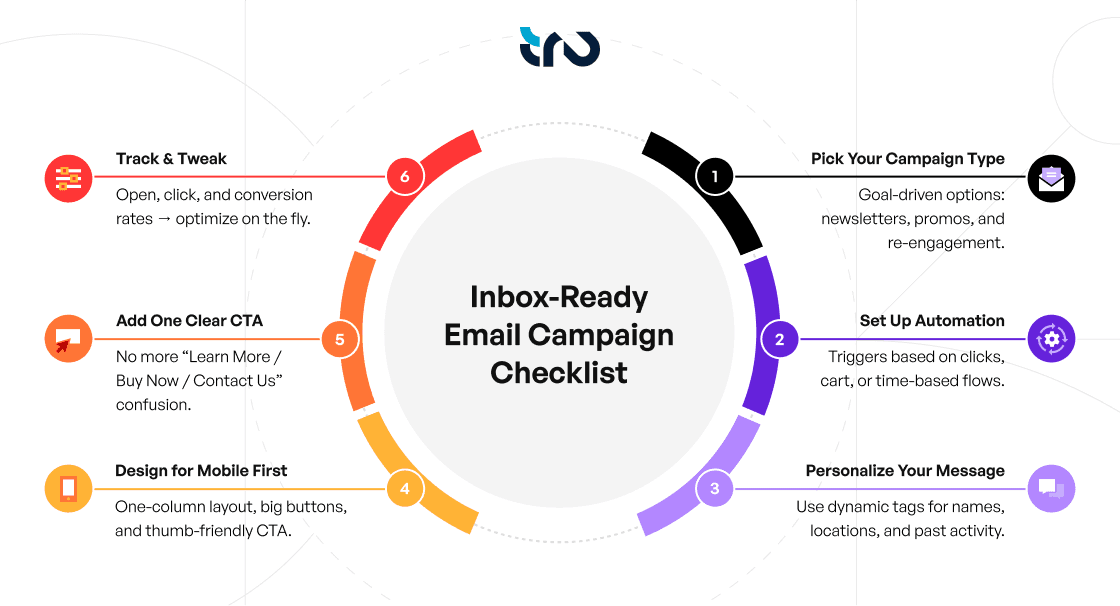
Final Thoughts
Email is still one of the most effective channels for e-commerce, low-cost, high-return, and deeply personal when done right. Building real connections drives serious revenue and boosts repeat sales.
To achieve the goal, start small, track results, and scale over time. With the right tools and approach, e-commerce email marketing can drive real, lasting results for online businesses.
Looking to take your email marketing to the next level? Tru helps e-commerce brands build smarter, automated campaigns that turn clicks into customers. Start a conversation with our team to see how we can support your next move.

